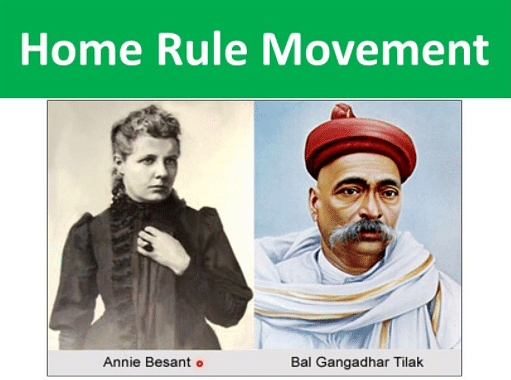UGC NET Paper 2 History Mock Test - 8 - UGC NET MCQ
30 Questions MCQ Test - UGC NET Paper 2 History Mock Test - 8
Simon Commission had visited India during the times of which among the following Viceroys?
Which of the following Delhi Sultans did not allow the Ulemas to interface in matters of state?
| 1 Crore+ students have signed up on EduRev. Have you? Download the App |
When Mahatma Gandhi was arrested who among the following took over the leadership of Salt Satyagraha?
Consider the following statements:
1. Trearty of Purandar was signed between the Rajput ruler Jai Singh I and Shivaji Maharaj.
2. Jahandar Shah was the successor of Mughal empire after the death of Bahadur Shah.
3. Nadir Shah invaded India during the reign of Muhammad Shah.
Which of the above given statements is/are correct?
1. Annie Besant set up her Home Rule League in September 1916.
2. Lokmanya Tilak set up his league in April 1916.
Which of the statements given above is/are correct ?
Which of the following were reasons for the emergence of the left-wing within the congress in the late British Era?
1. There was a group of young leaders like Jawaharlal Nehru and Bose who were influenced by the outside world and the ideological developments there.
2. Socialist ideas acquired roots in the Indian soil and socialism became the accepted creed of Indian youth.
3. Impact of the Russian Revolution, wherein Lenin overthrew the despotic Czarist regime and declared the formation of the first socialist state.
Select the right code from the code given below.
Consider the following statements.
I. Non-Violence is not to be compromised within Buddhism.
II. Buddhism advocated ‘Gnana Marga’.
III. Mahavira remained silent and agnostic about the existence of God.
Choose the correct statement.
Consider the following statements with reference to the Pitt’s India Act of 1784:
1. It designated the Governor of Bengal as the ‘Governor-General of Bengal’.
2. It provided for the establishment of a Supreme Court at Calcutta.
3. The company’s territories in India were for the first time called the ‘British possessions in India’.
Choose the correct statement.
Consider the following statements regarding Round table Conferences:
- The 1st Round Table Conference was chaired by the British Prime Minister, Ramsay MacDonald.
- In the 2nd Conference, Atlee announced the formation of North-West Frontier Province.
- Tej Bahadur Sapru represented the Liberals in the 2nd Conference.
Which of the statements given above is/are not correct?
Regarding causation and imagination in historical analysis, which of the following statements are CORRECT?
(a) Establishing a single, definitive cause for historical events is rarely achievable due to the complex interplay of factors.
(b) Historians employ their imagination to reconstruct past events by filling in gaps in the historical record.
(c) Historical imagination is completely unconstrained by evidence and allows for entirely fictionalized narratives.
(d) Ideally, historical interpretations should present a single, causal narrative for a historical event.
Which of the following Gupta kings had issued a gold coin which depicts a rhinoceros?

Among the given options, which of the following is the correct match for Prarthana Samaj, Young India, Lokhitvadi, Satyashodhak Samaj and Rehnumai Mazdayasan Sabha, respectively?
“Kings are made for Public; Public is not made for the King”. Who among the following made this statement during the national movement?
Bhagwati sutra is related to which of the following religions?
Which of the following statements are correct about Harappan Valley Civilization?
- The drainage pattern of Harappan Civilization was very advanced
- While the sun dried bricks were used to make foundation of a house, the roof was made of wood
- Wheat and Barley were the predominantly grown crops during the period
- Camels and asses were used as means of transport
Select the correct option from codes given below:
Which of the following is associated with Megaliths?
Which of the following Shaka ruler is also mentioned in Mathura lion capital?
Parvati Agrawal was the daughter of which among the following Indian freedom fighter?
Consider the following statements:
- Deoband movement aimed at the welfare of Muslims through western education and support of the British Government.
- Aligarh movement emphasised on the reconciliation of Islamic teachings with the needs of the modern age.
Which of the statements given above is/are correct?
Which of the following is/are the central point in Ashoka’s Dhamma?
Below given are two statements, one is labelled as Assertion (A) and the other as Reason (R):
Assertion(A): Raja Todar Mal was made the Revenue Minister of Akbar and was known as ‘Mir-i-Tuzak’.
Reason(R): Todar Mal introduced ‘Bandobast’, a revenue assessment system that classified land into four categories.
Select the correct answer using the codes given below:
Kol Mutiny took place in which of the following years?
Match the following, with reference to the Mauryan dynasty.

Which one of the following native states was NOT annexed by the British on the basis of the Doctrine of Lapse?
Which act extended the principle of communal representation by providing separate electorates for depressed classes?
Which among the following battles was / were fought before the annexation of Punjab?
- Battle of Ramnagar
- Battle of Chillianwala
- Battle of Gujarat
Choose the correct option from the codes given below :


















